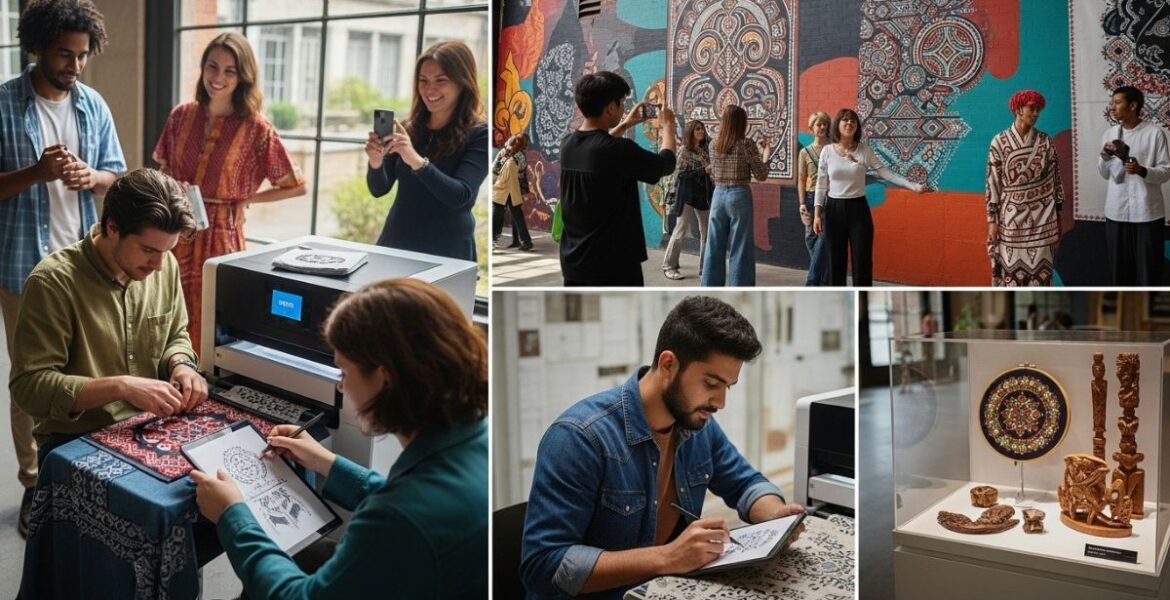Exploring the Cultural Significance of serlig in Modern Times

Serlig, a term that echoes through the corridors of history and culture, holds layers of significance that stretch far beyond its origins. As societies evolve, so does the understanding and appreciation of serlig. This multifaceted concept has found its place in modern discourse, interwoven with themes of identity, tradition, and unity. In today’s world—a melting pot influenced by globalization—serlig serves as both a bridge to our past and a beacon guiding us toward future cultural expressions. Join us on an exploration of serlig’s rich tapestry as we delve into its roots, transformations across cultures, contemporary relevance, and the challenges it faces in our rapidly changing landscape.
The Origins of Serlig
The origins of serlig can be traced back to ancient traditions and rituals, often rooted in the spiritual practices of indigenous communities. It was a way for people to connect with nature and their ancestors, serving as a medium for storytelling and cultural transmission.
Initially, serlig represented more than just an idea; it embodied community values and beliefs. Through generations, these customs were passed down orally, ensuring that each iteration retained its essence while adapting to new contexts.
Archaeological findings have revealed artifacts linked to serlig, suggesting its significance in various ceremonies. These relics are reminders of how intertwined culture is with daily life.
As societies progressed through time—shaped by migration and trade—the concept began merging with different philosophies. This blending allowed serlig to evolve into something universally relatable yet deeply personal for many today.
The Evolution of Serlig in Different Cultures
Serlig has journeyed through various cultures, adapting and transforming its meaning over time. Originating in ancient communities, it served as a symbol of unity and identity.
In indigenous tribes, serlig often represented connection to the land and ancestry. Ceremonies celebrated seasonal changes, reinforcing bonds within the community.
As societies evolved, so did serlig’s interpretation. In urban landscapes, it morphed into a form of artistic expression. Street art and performances began to infuse traditional elements with contemporary styles.
Different regions embraced serlig uniquely. In some cultures, it became intertwined with spirituality, while others viewed it as a vehicle for social commentary. This versatility speaks volumes about its cultural relevance.
The global exchange of ideas further enriched serlig’s narrative. Today’s interpretations reflect an amalgamation of past influences infused with modern sensibilities. Each culture adds layers that enhance this vibrant tradition without losing its core essence.
The Role of Serlig in Modern Society
Serlig plays a vital role in shaping identities and fostering community bonds today. It serves as a bridge connecting individuals to their cultural roots while adapting to contemporary life.
In urban areas, serlig has transformed into a symbol of resilience. People embrace its heritage even amidst rapid change. This acknowledgment fosters pride and prompts exploration of ancestral stories.
Social media has amplified the presence of serlig, allowing diverse voices to share experiences and interpretations. Platforms become spaces where traditions are reimagined and celebrated globally.
Additionally, educational initiatives highlight the significance of serlig in schools. These programs encourage younger generations to appreciate their cultural backgrounds actively.
Artistic expressions also incorporate elements of serlig, making it relevant for modern audiences. Musicians, visual artists, and performers draw inspiration from this rich tradition, ensuring its evolution continues vibrantly within society’s fabric.
Cultural Appropriation and Misinterpretation of Serlig
Cultural appropriation surrounding serlig often raises eyebrows. It becomes a concern when elements of this rich tradition are adopted without understanding or respect.
Many individuals and brands have taken aspects of serlig, turning them into mere trends. This commercialization strips away the deeper significance tied to its origins. The essence of serlig is rooted in cultural narratives that deserve recognition.
Misinterpretation can also lead to stereotypes. When people see surface-level representations, they miss out on the history and values embedded within serlig practices. Such misunderstandings dilute its meaning.
Authenticity suffers as diluted versions circulate widely. This trend not only alienates communities but also perpetuates misconceptions about their heritage. Respecting the true nature of serlig involves engaging with it thoughtfully and acknowledging where it comes from.
Careful dialogue is essential for fostering appreciation rather than appropriation in discussions around serlig’s cultural significance.
Celebrating and Honoring Serlig: Festivals and Traditions
Serlig is often celebrated through vibrant festivals that bring communities together. These events showcase the rich heritage and traditions associated with serlig, creating a lively atmosphere filled with joy.
During these celebrations, participants don traditional attire, reflecting the cultural significance of serlig. Music and dance fill the air, inviting everyone to join in the festivities. Local artisans display their crafts, highlighting creativity intertwined with historical narratives.
Food plays a crucial role as well. Special dishes inspired by serlig connect generations through shared recipes passed down over time. The aromas evoke memories while fostering communal bonds.
Rituals honoring ancestors are integral too. Lighting candles or offering prayers during ceremonies underscores respect for those who have come before us. This act reinforces cultural identity and continuity within modern society.
Through these vibrant observances, serlig thrives as a living tradition that inspires pride and unity among its celebrants.
The Impact of Globalization on Serlig
Globalization has transformed the landscape of many cultural practices, including serlig. As borders blur and communication flows freely, this unique tradition finds itself in diverse contexts.
New interpretations emerge as people from different backgrounds engage with serlig. This interaction can lead to revitalization or dilution of its original meaning. In some cases, it fosters appreciation and understanding; in others, it risks commodification.
The internet plays a significant role in spreading awareness about serlig. Social media platforms showcase its beauty and significance across cultures. Yet, this visibility brings challenges too.
Cultural exchanges often spark curiosity but may overlook deeper histories tied to serlig’s roots. Balancing authenticity with modern influences is crucial for maintaining the essence of this practice amidst rapid change.
As globalization continues to shape our world, the future of serlig hangs in a delicate balance between adaptation and preservation.
Preserving the Authenticity of Serlig for Future Generations
Preserving the authenticity of serlig is vital for future generations. It serves as a bridge connecting people to their rich cultural heritage. When traditions are maintained, they foster a sense of identity and belonging.
Communities play a crucial role in this preservation. By sharing stories, rituals, and practices associated with serlig, they keep its essence alive. Workshops and educational programs can help engage younger audiences in authentic experiences that honor this tradition.
Documentation also plays an important part. Archiving oral histories or creating digital content ensures that knowledge about serlig remains accessible. This helps combat the risk of misinterpretation or dilution over time.
Engagement with local artisans further strengthens these efforts. Supporting craftsmen who specialize in traditional techniques preserves not only skills but also unique interpretations of serlig’s meaning across cultures.
Conclusion:
The cultural significance of serlig transcends time and geography. Its origins offer a glimpse into rich traditions that have shaped communities for generations. As society evolves, so does the interpretation and expression of serlig across various cultures.
Modern society finds itself at a crossroads with these practices. While some embrace serlig as part of their identity, others risk misinterpreting its value through appropriation or superficial engagement. This highlights the need for awareness and respect toward its roots.
Festivals celebrating serlig continue to thrive, serving as vibrant reminders of its importance in uniting people around shared heritage. However, globalization poses challenges by diluting these customs in favor of mainstream adaptation.
You may also like

Unveiling antarvwsna: A Deep Dive into Its Meaning and Significance


Leave a Reply